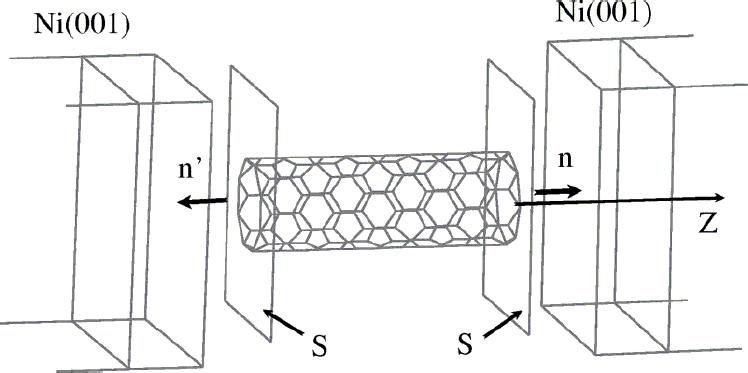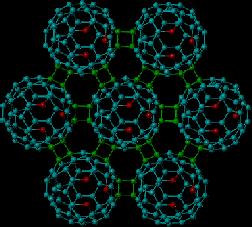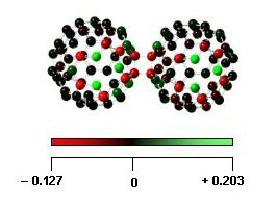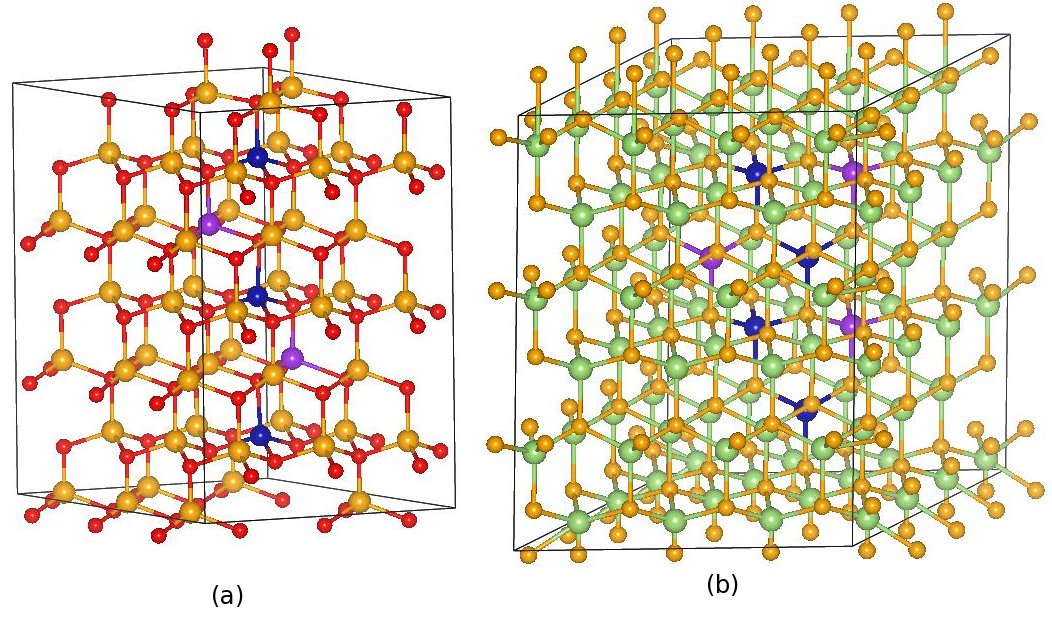SCIENTIFIC ACTIVITY
Dr. A. N. A N D R I O T I S
Research Director, Emeritus
A.2 SCIENTIFIC
work and activity
FIELD OF INTEREST : Theoretical Condensed Matter Physics and
Materials Research
for more details see
DETAILED WORK)
A.2.1 Synopsis
Objectives and Constraints :
Despite
the fact that the frontier research in Materials becomes strongly
system focused day after day, my work had to cover a wide range
of topics in the highly competing fields of the Theoretical
Condensed Matter Physics and Materials Research.
My major contributions include the following
new theoretical methods and generic models
(in chronological order) :
- The Periodic Planar Jellium Approximation
to the free, chemisorbed or defected metal surface. This method is a significant improvement of
the corresponding jellium model as it incorporates
zeroth order lattice effects in a direct (non-perturbative) way. (See Refs. 3-7, 12, 23, 28, 35 in
the List of Publications
)
- The Coupled Hartree-Fock (CHF) approximation to the embedding
of atoms
in metal surfaces and bulk (at various levels of approximation).
This is an analytic HF approximation to systems with azimuthal or spherical symmetry
(see Refs. 10, 11, 17 in
the List of Publications
)
- Applications of the Coherent Potential Approximation to the
problem of alloys and the Hubbard problem within the tight-binding approximation
(at various levels of approximation). (See Refs. 1, 2, 16, 24, 30 and 14, 20, 21, 27 in
the List of Publications
)
- The implementation of the Quadratic KKR approach to the embedding
of single impurities in metals. (See Refs. 26, 39, 45 in
the List of Publications
)
- An Embedding theory based on the Coupled Hartree Fock (CHF) theory and that of the Green's
function matching approach (to be referred to as ICP-CHF-A and SSH methods
in the following). This method is proposed for studies of excited states
of embedded atoms and clusters as well as in applications in
Molecular Electronics. (See Refs. 22, 25, and for applications see Refs. 60, 89, 91, 98, 100, 102, 105 in
the List of Publications
)
- A Molecular Dynamics method, based on the Tight-Binding and
the Hubbard approximations,
which is applicable to clusters, surfaces and bulk of
both metals and semiconductors.
(See Refs. 31-34, 36-38, 40-44, 46, 49, 50, 63, 80, in
the List of Publications
)
- A study of the local exchange energy funcional.
(See Ref. 48 in
the List of Publications
)
- A Green's function matching method for calculating
transport properties of Single Wall Nanotubes, Nanowires, Graphene Nanoribons, and Molecules.
We have shown that Y-shaped SWCNs exhibit significant inherent rectification and switching properties.
The method has been proposed for studying also the effect of metal contact-leads
on the transport properties of nanosystems.
(See Refs. 58, 60, 65, 66, 74, 75, 76, 94, 99, 101, 102, 105, in
the List of Publications
)
- Studies of the interaction of transition metals with Carbon-based materials (SWCNs, C60, graphite, graphene, benzene, etc).
Our works has been considered as seminal in this field.
(See Refs. 52, 53, 55, 57, 62, 63, 82, 88, 98, 102, 105, 122 in
the List of Publications
)
- Proposed theory for stabilization of Si-nanotubes by encapsulating transition metals.
(See Refs. 64, 67, 72, 73, in
the List of Publications
)
- Theory of Carbon Magnetism . In these works we propose and demonstrate
that carbon magnetism has its origin at the synergistic action of defects .
It is based on a defect-induced and defect-mediated synergistic
process facilitated
by the development of charge density modulations (CDM).
According to this approach,
magnetic interactions are developed as a result of the synergy of two types of defects,
one of them providing the magnetic moments, while the other
promoting the magnetic coupling (MC) among the provided magnetic moments.
A key factor for the establishment of the MC was attributed mainly to the development
of charge modulations in the form of charge density like waves
(See Refs. 68, 83, 84, 113 in
the List of Publications
)
- Theory of the Magnetism of Diluted Magnetic Semiconductors (DMSs).
This is described in terms of a defect-induced defect-mediated (DIDM) synergistic process facilitated
by the development of successive spin-polarizations (SSP).
According to this model, long range MC can be promoted through the spin-polarization
induced by the magnetic (or not) cations on their
neighboring ligands (anions), which subsequently dictate the coupling to them of other
neighboring magnetic (or not) cations. The latter, in turn, induce spin polarization on their
neighboring ligands (anions) and so on.
In these works, it is proposed that the synergistic action of two different
codopants can lead to enhanced magnetism in DMSs, This is the result
of a defect-induced and defect-mediated mechanism as in the case of Carbon
magnetism.
(See Refs. 87, 90, 93, 104, 106, 107, 109, 110, 114-116, 116, 121, 123, 124, 127, 132, 133, 138-154 in
the List of Publications
)
Achievments in scientific work :
The above listed proposed models and methods are original. They
improve previously proposed theories and our understanding of exciting contemporary
experimental data especially in the fields of the electronic structure of nanostructures, the embedding, the nanomagnetism and
the transport in nanomaterials. More specificly:
- I proposed new model approximations which have led to the development of new computational
techniques and/or the improvement of
existing techniques for studying complex systems of the condensed matter physics.
- I have made a systematic development
of computational methods expanding my work to mutually supported
computational techniques and methods which are applicable to both
metals and semiconductors including bulk and
surface properties. In particular:
- State of the art new computer codes
and methods have been developed for treating a wide range of
problems of materials science.
- Existing computer codes have
been modified/adapted according to the requirements of my work.
- The various new computational techniques and
methods I developed are based either on new ideas and/or the combination of highly
sophisticated methods of Condensed Matter Physics including cases
where the proposed combinations match methods which had
been used in the past independently either only by physicists or
only by chemists.
- I have employed equally well ab initio
and semi-empirical methods which I have applied succesfully
in justifying current experimental data. (See Table for computational
methods used in the following figure).

Publications
I have published more
than one hundred and fourty (150) scientific papers in refereed journals, (see :
List of Publications ), I have
delivered more than 100 work-presentations in international and
local conferences/workshops.
I have written two books in
Computational Physics, both of which have been already published
(see : Computational Physics I, II ),
and are used as university textbooks.
Organizational, Educational and Administartive Work :
- I have
succeeded in creating an efficient teaching and training
program in Computational Physics for undergraduate and graduate students by developing
and teaching three (3), completely new, university courses
in Computational Physics and their corresponding laboratories.
- I have succesfully contributed in the
establishment of an efficient Computer Center ( common to
both the FORTH and the Univ. of Crete (UC) ) which has been running very
effectively supporting most of the computer needs of FORTH and
UC. In the activities of this Computer Center has its roots the
well known company "FORTHNET" .
- I have attracted very good students who had and
have been working with me on Ph.D and Diploma
thesis works succesfully.
- I have got substantial financial support from my successful
grant applications which enabled me to support
my undergraduate (diploma )
and graduate (Ph. D. ) students.
Most recent projects include studies on :
- the structural,
electronic and magnetic properties of clusters of transition metals.
(see Review work in Reference 46 of the List of Publications
)
- the enhancement of the magnetism of small bimetallic clusters of Transition metals
(see references 79, 80 and 81 in the List of Publications
).
- the I-V characteristics of carbon-, SiC-, Si-based nanotubes
and Si-nanowires. This study is based on (i) the Surface-Matching of Green's
Function embedding method and (ii) Bardeen's Transfer Hamiltonian Approximation
both methods employed whithin the geometry shown below.
(For theory and applications, see references 60 and 66 and refs. 58, 59, 61, 64, 65, 69, 74,
75, 77 in List of Publications
).

- the newly observed s-p magnetism of C60-polymers.
A new defect-based
approach (see references 68, 83, 84, 88 of the
List of Publications
) has been proposed to explain this magnetism in the
defected 2D-Rhombohedral-C60 polymer shown in Fig. below;
(carbon vacancies are surrounded by red-coloured C-atoms).
The proposed theory has been generalized so as to include
the newly observed magnetism of the non-traditional inorganic magnetic materials
like (ZnO, CaO, HfO2, and in dilute-magnetic semiconductors). Our findings
allowed us also to relate the s-p magnetism with a generalized
Mc Connell type magnetism and
demonstrate the relationship of the s-p magnetism
with the traditional d-ferromagnetism of diluted magnetic semiconductors.

In the Figure below,
the charge transfer induced by the defects is shown. As discussed
in refefence 88 of List of Publications
) the presence of two kinds of defects (i.e., carbon vacancies and 2+2 cycloaddition
bonds) establish charge transfers that help in creating the
ferromagnetic coupling mechanism which couples ferromagnetically
the single spins each of which is provided by a (defected) C60 molecule. In the Figure below, the green (red) color indicates
accumulation of positive (negative) charge.

The development of the magnetism in the defected 2D-Rhombohedral-C60 polymer shown in the above is the result
of the synergistic action of the two defects, the C-vacancies and the
2+2 cycloaddition bonds. That is, one of the defects (the C-vacancies) provide the magnetic moments
while the other kind of the defects (the 2+2 cycloaddition bonds) contribute to the establishment of the ferromagnetic
coupling among the magnetic moments.
Based on this observation, we proposed the
defect-induced and defect mediated theory as a realistic
explanation of the newly observed magnetism not only in carbon-based materials but also
in diluted magnetic semiconductors, transition metal oxides and related materials.
We have proposed that the
defect-induced and defect mediated magnetism
can be realised by codoping
and have demonstrated that codoping of wide band semiconductors (eg, ZnO, GaN, TiO2) with appropriate
(complimentary pairs of) dopants can lead to diluted magnetic semiconductors with enhanced magnetic properties.
The magnetic enhancement was found to be pronounced in the cases in which the
codopants form bipartite structures in the semiconductor hosts.
Our findings establish the proposed
defect-induced and defect-mediated mechanism as a
generic
mechanism for developing magnetic features in non magnetic materials.

The above picture shows the supercells we used in our calculations for codoped
ZnO and GaN systems in which the codopants form bipartite configurations.
(a) Relaxed structure of 108 atom Zn(3Co,2Cu)O
supercell with a Co-Cu-Co-Cu-Co chain of nearest neighboring
codopants over successive Zn planes. The Zn atoms are shown in
yellow and O in red. The Co atoms are colored blue, while Cu are in
purple. (b) Relaxed structure of 192 atom Ga(4Co,3Cu)N supercell
with codopants forming a bipartite lattice. The Ga atoms are shown
in green and N in yellow. Coloring of Co and Cu atoms are the same
as in (a).
Two model approximations have been proposed for the enhancement of ferromagnetism in DMSs and TMOs, namely:
- The Successive Spin Polarization Model.
According to this model, long range MC can be promoted through the spin-polarization
induced by the magnetic moments (magnetic cations or not) on their
neighboring ligands (anions), which subsequently dictate the spin polarization of theri
neighboring magnetic (or not) cations. The latter, in turn, induce spin polarization on their
neighboring ligands (anions) and so on.
(See a TOPICAL REVIEW Ref. 153 in
the List of Publications .
- The Successive Superexchange Model.
According to this model, in a chain of dopants, A(1), A(2) A(3),...,A(n), successive uuperexchange interactions between
the dyads A(i-1)-A(i) and A(i)-A(i+1) lead to ferromagnetic coupling between A(i-1) and A(i+1) dopants.
(See Refs. 142, 153 in
the List of Publications .
- New computational medods have been proposed for the evaluation of the Goodenough-Kanamori products
and the calculation of the magnetic coupling constant between a magnetic dopant and its first nearest neighboring
anion ligands, (correspondingly, see Refs. 148 and 150 in the
List of Publications) .
for more details see
DETAILED WORK)
Back to Home
page




